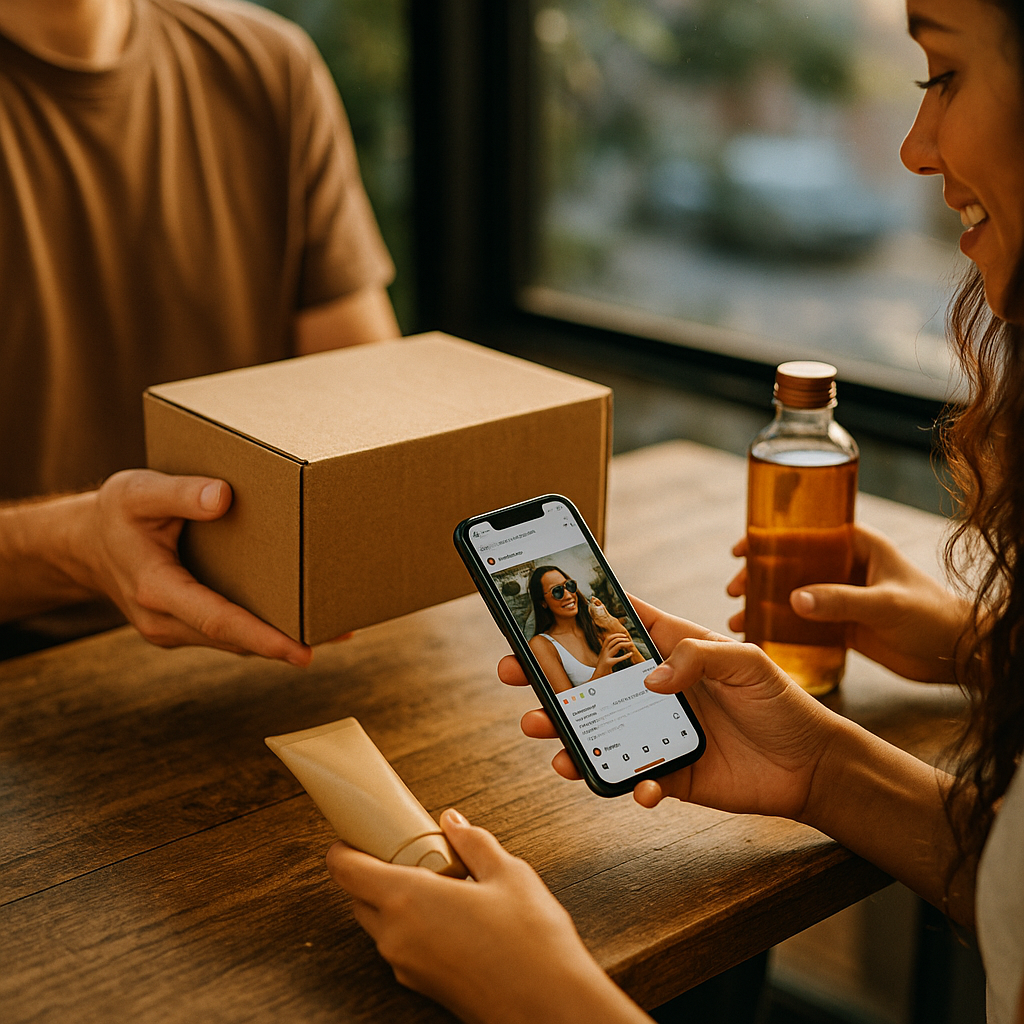Launching an influencer program with zero budget may sound daunting, but partnering through in-kind collaborations is a strategic way to expand your brand’s reach. By leveraging products or services as compensation, brands of any size can attract enthusiastic influencers. Discover step-by-step tactics to build an effective influencer program using in-kind partnerships in 2025—and set the stage for lasting brand growth.
Understanding In-Kind Influencer Partnerships
In-kind partnerships provide influencers with products, services, or exclusive experiences instead of monetary compensation. According to a 2024 Influencer Marketing Hub survey, over 67% of startup brands initiate campaigns with in-kind collaborations. These arrangements let brands control costs while giving creators unique content opportunities. Influencers gain value by accessing or showcasing your offerings, creating authentic and mutually beneficial relationships.
It’s crucial to align your product’s perceived value with influencer expectations. Select products or experiences that genuinely thrill your partners and create memorable unboxing or use-case moments. This ensures influencers remain motivated and their content stays authentic, enhancing long-term partnerships and follower trust.
Identifying the Right Influencers for Zero-Budget Campaigns
Finding budget-friendly influencers means moving beyond follower counts. Micro-influencers and nano-influencers often deliver higher engagement and niche authority compared to celebrity counterparts. A Stackla report revealed that 86% of consumers trust recommendations from real people over paid ads, which micro and nano-influencers excel at providing.
- Micro-influencers (1k–100k followers): Highly engaged communities and relatable peer voices.
- Nano-influencers (fewer than 10k followers): Deep connections with local or niche audiences.
Analyze potential partners’ content quality, consistency, audience demographics, and tone. Reach out personally, showing genuine appreciation for their work. Personalization separates your pitch from spam and signals a partnership rather than a generic ask for promotion.
Crafting an Enticing Value Proposition
Your influencer value proposition should answer the creator’s question: “What’s in it for me?” Go beyond merely sending free products. Offer exclusivity, early access, or experiences unavailable to the broader public. Examples include:
- Personalized product bundles curated for the influencer’s taste
- Early sneak peeks at upcoming launches or limited editions
- Invitations to virtual events, online masterclasses, or beta testing
- Features on your brand’s website or social media platforms
Communicate clearly about the benefits, expectations, and creative freedom. Empower influencers to share honest feedback rather than prescriptive talking points. This fosters trust, encourages higher-quality content, and increases the likelihood of genuine word-of-mouth marketing.
Designing a Foolproof Outreach and Onboarding Process
Efficiently onboarding influencers with in-kind rewards maximizes collaboration success and reduces misunderstandings. Develop a structured approach:
- Initial Outreach: Craft direct messages or emails highlighting your excitement about their work and how your offer connects with their interests.
- Clear Offer: Outline exactly what you’ll provide and what content you’re seeking (stories, reels, blog reviews).
- Agreement: Supply a simple agreement template, clarifying timelines, deliverables, disclosure rules, and rights for content usage.
- Welcome Kit: Include thoughtful touches—handwritten notes or usage tips—to delight and build rapport.
- Comprehensive Briefing: Provide detailed background on your brand, product features, and any legal requirements (such as #ad or #gifted disclosures).
Follow up within a week to ensure they’ve received your package and understand the expectations. Prompt, friendly communication builds lasting goodwill and potential repeat collaboration.
Maximizing Outcomes and Tracking In-Kind Campaign Performance
Even without a financial outlay, measuring influencer program ROI is vital for scaling future partnerships. Set specific, realistic goals based on campaign scope. Common metrics include:
- Content quality and alignment with your brand’s message
- Engagement rates (likes, comments, shares, saves)
- Referral traffic or tracked discount code usage
- Follower growth attributable to campaign timing
- Audience sentiment displayed in comments and DMs
Use tracking links, dedicated hashtags, or custom promo codes to attribute results directly to each influencer. Ask for permission to repurpose user-generated content on your owned channels, amplifying reach and proving campaign impact to internal stakeholders. Always debrief with your partners—gather feedback to refine your next outreach and strengthen relationships.
Troubleshooting Common Pitfalls in In-Kind Influencer Programs
Every in-kind influencer partnership presents unique challenges. Avoid common traps by proactively addressing these frequent issues:
- Mismatch of Expectations: Prevent misunderstandings by laying out deliverables, usage rights, and timelines from day one.
- Lack of Engagement: If an influencer underdelivers or ghost posts, have a grace period for follow-up or consider a trial run with new partners.
- Compliance Errors: Guide influencers on up-to-date disclosure regulations to maintain authenticity and legal safety.
- One-Off Collaborations: Nurture relationships even post-campaign. Genuine appreciation and continued small gestures drive brand advocacy and future organic mentions.
Develop a reliable feedback loop so you can consistently improve your program, demonstrate value, and motivate influencers to stay connected to your mission.
Frequently Asked Questions: Building In-Kind Influencer Programs
- Do in-kind partnerships actually work in 2025?
Yes. Many brands start with in-kind-only collaborations to build credibility and test influencer impact before committing to larger budgets. Creators are open to unique value—especially if the product is desirable and aligns with their niche. - How can I avoid influencer disappointment?
Set clear expectations from the start, deliver high-quality products, and offer exclusive experiences. Seek feedback regularly and tailor offers to the influencer’s preferences. - How do I find reliable micro- or nano-influencers?
Use social listening tools, search relevant hashtags, and observe community engagement. Outreach is more successful when personalized and genuine. Direct messages, rather than mass emails, build trust. - Are there legal considerations for in-kind influencer deals?
Yes. Disclosure is essential. Both FTC and regional guidelines (such as “#gifted”) apply even to unpaid collaborations. Provide clear instructions to influencers to avoid penalties or audience mistrust. - Can I reuse influencer content on brand channels?
Only with explicit permission. Clarify this in your agreement so you can amplify authentic content while respecting creator rights.
Building an influencer program with zero budget is not just possible, it’s a strategic advantage. By nurturing strong in-kind partnerships, staying clear on expectations, and learning from each campaign, you’ll drive authentic growth and lasting brand love—without breaking the bank.
